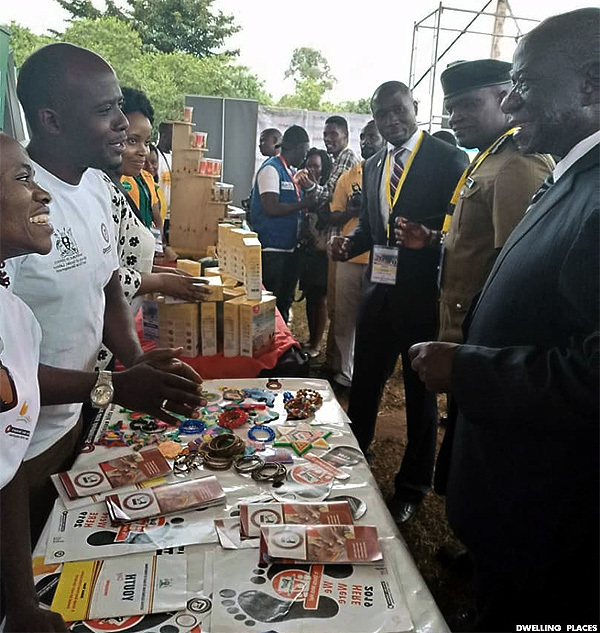Is The NRM Government Neglecting The Youth? Part I

Uganda has the world’s youngest population with at least 78% of the populace below the age of 30 and the bulk of its citizens falling between the ages of 12-30 years. The youth account for close to 11 million of the citizenry, with female youth accounting for 51% of these numbers. At least 80% of Uganda’s youth population resides in rural areas.
The definition of Youth in Uganda is age centric, defining youth as persons falling in the age bracket of 18-30.
The Youth in Uganda are not homogenous and find themselves in diverse contexts and realities such as rural-urban, elite, skilled-semi skilled, to mention but a few. These figures point to a significant youth surge in the demographics of Uganda, thereby underscoring the urgent need to appreciate and rethink development programs and related policies aimed at young people to ensure more young people benefit and influence policy processes more meaningfully across the board.
While the surge of Youth in population’s world over may be new, the participation of young people in policy processes in Uganda is not particularly new as youth have historically played a significant role in shaping the social, political and economic policy landscape in this nation. The questions emerging in development discourse should be centered on reviving or strengthening youth visibility in policy processes beyond the benign notion of care or political favor for special interest groups often looked at as “block” voters as is the case in the much-politicized youth issue today. This is driving many politically intentioned assemblages, for example, People Power and the rest of the party-political actors to rally their aspirations alongside identifying with a youth cause or generational cause per se. Consequently this article series is a presentation of thoughts the author seeks to deeply and qualitatively establish the extent to which the NRM government policy initiatives intended to benefit youth in Uganda have been successful beyond the now corporate arithmetical inferences to the youth factor and the NRM government’s politically proliferated failure to address youth issues enhanced by the anti-government forces.
The National Resistance Movement (NRM) regime headed by President Yoweri Kaguta Museveni took over in 1986 with a promise to create structures to provide young people with platforms to engage in the governance of their Country.
Youth, just like women, persons with disabilities, workers and the army were identified as special interest groups that needed affirmative action, which was granted through representation in the highest representative body, parliament, under the movement philosophy of individual merit.
The justification for this affirmative action policy was largely their rather marginalized posture at the time hence the need for affirmative action and “special interest” representation in various structures including those in the decentralized Local government system. To date, such policy has not changed and it is still propelled by the NRM government, just as the issues of these groups especially the Youth continue being of interest to the government nationally and internationally.
While the affirmative action basis is the premise upon which youth participation in the policy is hinged it is important to appreciate two significantly structural dynamics that emerged as a result of this, whose bearing translates into the pattern and nature of participation of Ugandan youth policy processes today. Eventually, the Youth have found their own space in the governance structures and have gained enough influence and confidence to engage in areas not a preserve for the Youth only. It is a known fact that Uganda today boasts of a very youthful parliament and cabinet, that many critics by the close of 2016 were pessimistic that such government would deliver at all; an issue that has been proved possible by the current performance indicators.
The other dynamic is that institutions initially designed for youth participation have had a systematic change of face with Many being run by people outside the youth age bracket, to the discomfort of many, without understanding that these adults seemingly out of age are products of the affirmative action and can best supervise over institutions that have birthed them as they nurture the youth into responsibility.
In the NRM government, Structurally, Youth are recognized as a minority group of citizens. This ideology is not premised on the demographic realities of Uganda rather the context under which such ideology is based should be understood. It is a “special interest logic” that informs how youth are viewed and engaged than the demographic truths, some seem to rely on.
Uganda has a respectable legal, institutional and normative framework for policy-making. The 1995 constitution has provisions that promote the active participation of citizens in the governance processes. More to this, Youth are also encouraged to engage with policy processes in the Youth Council Act and the Local Government Act. The policy development process in Uganda has largely been inclusive.
During the struggle for liberation as a youth, President Museveni recruited his fellow youth to join him to fight dictatorship in Uganda as early as the 1970s. He further followed his value for the Youth during the bush war, Museveni continued recruitment of the youth into the guerrilla army, leading to the takeover of Kampala in January 1986. He has continued working with the youth to date. In the governance of the Country, the NRM under President Museveni introduced youth participation in politics through Youth Councils, representation at sub-county and district councils and Parliament. His NRM government had introduced ministry for youths and many of the first batches of the Youths have skyrocketed into positions of influence. People like Daniel Kidega the former Speaker of the EALA parliament, Nusura Tiperu formerly EALA representative, Geoffrey Ekanya an FDC stalwart and former Member of Parliament, Peace Mutuuzo formerly a private secretary to the President in charge of Youth Affairs, Susan Lubogo also a Museveni aide in charge Youth affairs and welfare in state House, Jude Opio was a very influential Youth in his college days, Richard Todwong as youthful as he was, became a presidential adviser in-charge Northern Uganda, before becoming a member of parliament and then Minister of State for General duties, and now the Deputy Secretary-General of the ruling NRM party.
It suffices to note that at the helm of the running of the NRM party is a very youthful team headed by Justine Kasule Lumumba as Secretary-General that has helped stabilize the party at the very trying times of political tides of divisions within the Party.



Comments are closed.